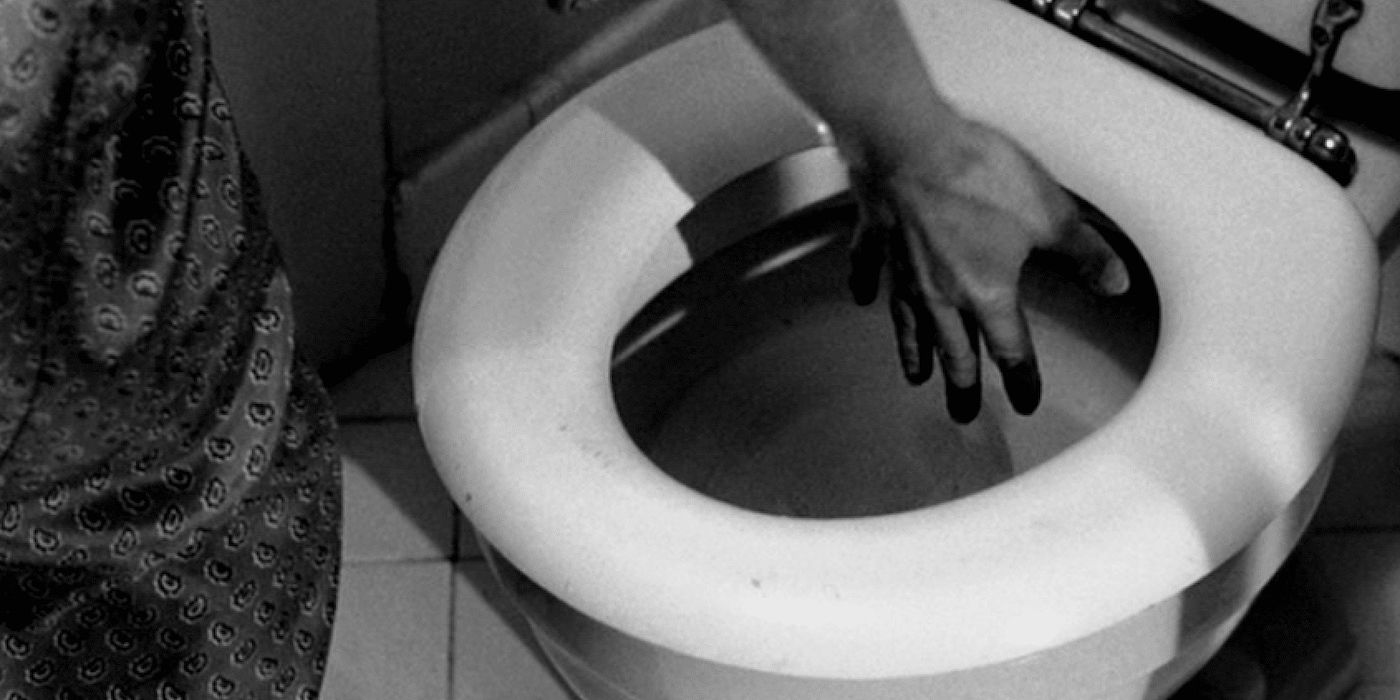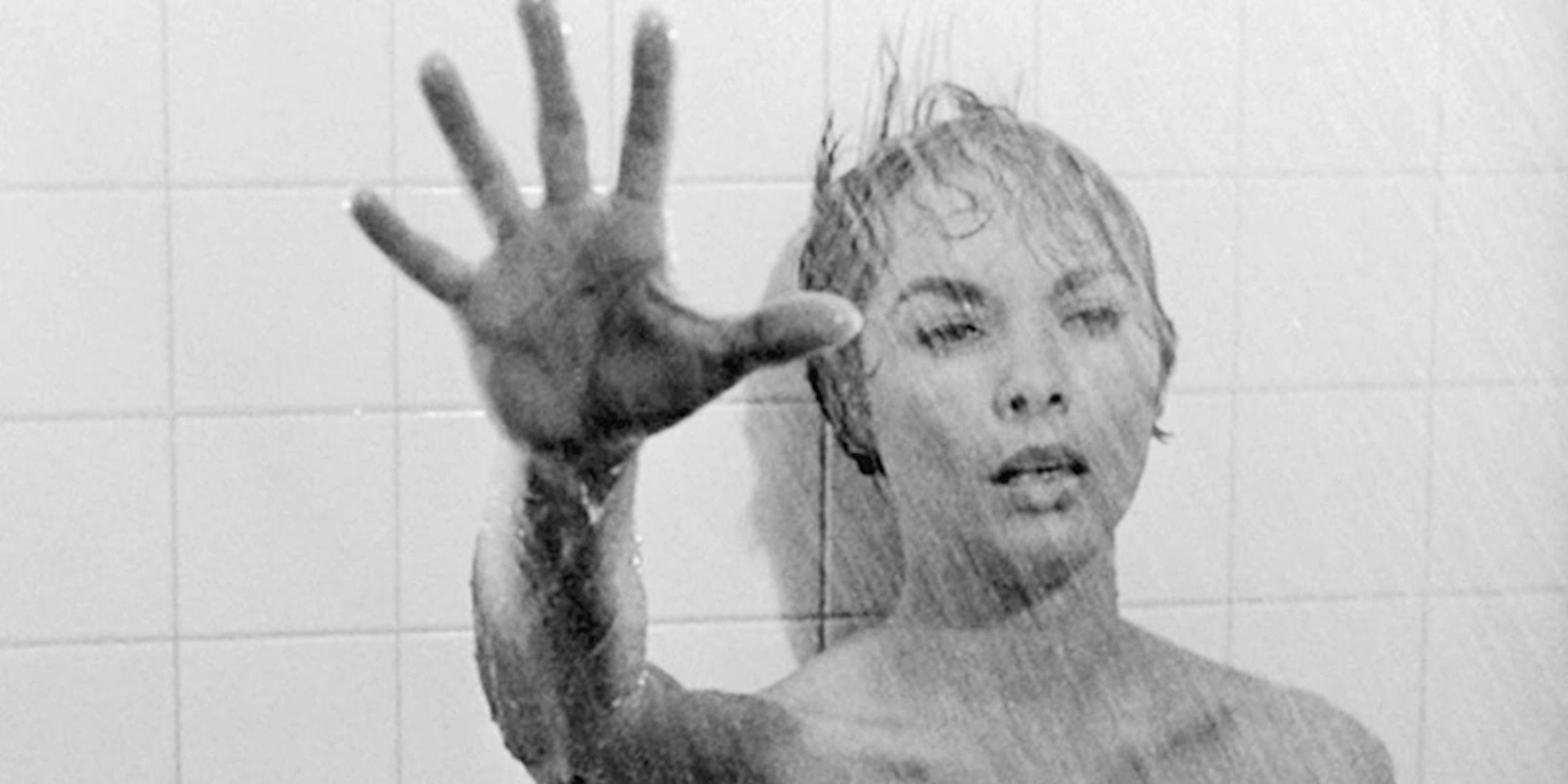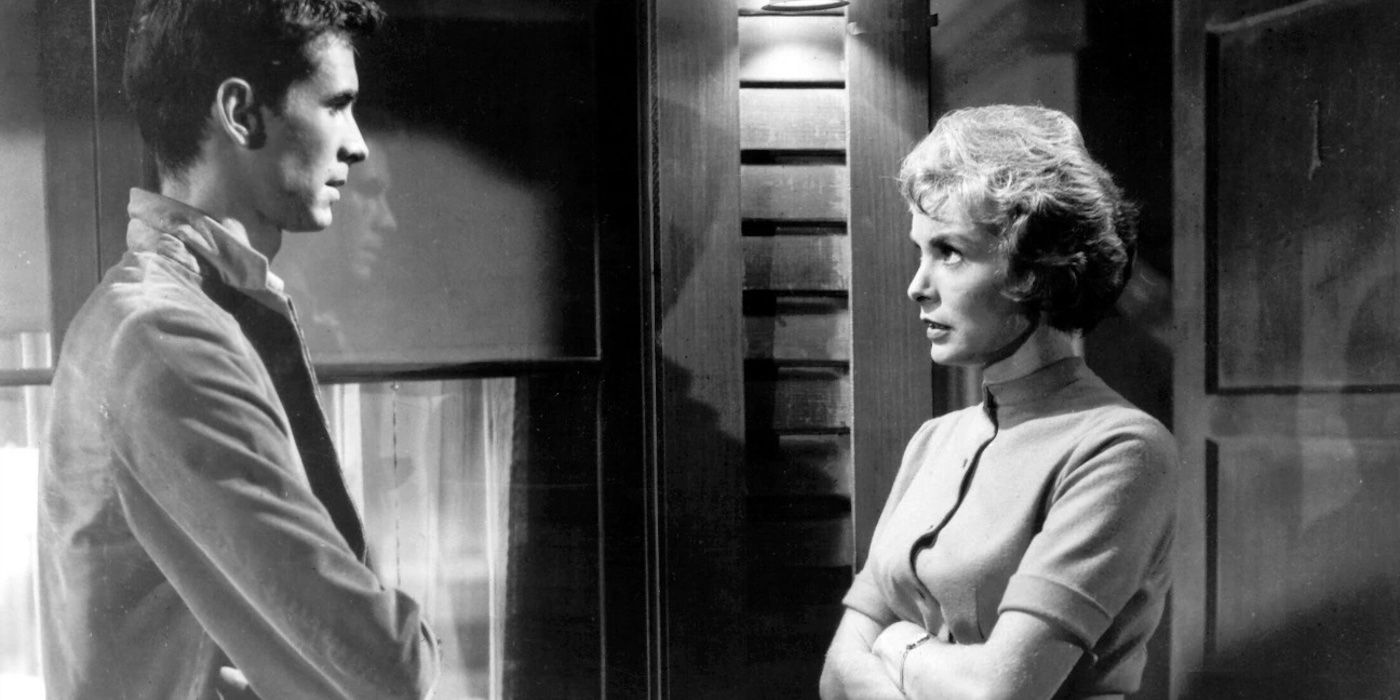Psycho is one of Alfred Hitchcock’s most beloved films and one of the most influential horror films of all time. And it's par for the course for any movie of this status to have a variety of trivia surrounding both its production and its release. Did you know that the film was instrumental in changing how theatres operate? Or that the film received an R rating 24 years after it was first released? The film was a landmark, and many more fun facts have passed through the movie sphere over the years. However, there’s one that’s stranger than the others, which might’ve stirred a bit of controversy for vulgarity at the time (had the film’s other subject matters not hogged the attention). The fact has nothing to do with the movie’s violence, nudity, or anything like that. Psycho was the first film to feature the visuals and sounds of a flushing toilet – kind of. This piece of trivia has been passed around so much that it hasn’t really been interrogated, often simply brought up as a sign of how prudish audiences were back then. In truth, the fact has quite a bit more depth to it.
Was ‘Psycho’ Really the First Movie to Show a Flushing Toilet?
Before we go into semantics, it’s important to identify exactly what the scene in Psycho was. A minute before her iconic demise in the shower, Marion Crane (Janet Leigh) decides to dispose of some evidence. Rather than just throwing it in the trash or hiding it, she instead decides to toss it into the toilet and flush it down. Over the years, the fact has been mangled a bit, the wording shifting slightly as it passes from person to person. One version states that Psycho was the first film to showcase a toilet at all. This fact is decidedly not true; Psycho isn’t even the first Hitchcock film to show a toilet, that title belongs to his 1936 film Secret Agent. Another claim is that it’s the first film to include the sound of a toilet flushing, rather than just being present in a scene. This isn’t true either. In fact, a toilet flushing showed up before even Secret Agent was released in theaters – that honor goes to the 1930 comedy Going Wild, where, at around 50 minutes in, a plumber can be seen and heard flushing a toilet.
So, if Hitchcock’s Psycho wasn’t the first film to show a toilet, and wasn’t the first to include the “sound” of a toilet, then is the fact true at all? Yes, the fact is still true. While Going Wild predates Psycho, there’s an important distinction between their toilet-flushing scenes. In Going Wild, the sound can be heard, and the toilet can be seen, but there’s no focus on it. The camera doesn’t linger on any shots of the water going down, but in Psycho, it does. The camera is tilted so that audiences can see the inside of the hotel toilet as the water swirls. This is the real distinction that makes Psycho’s scene stand out. It’s the first film to focus on a toilet flush and make it essential to the film's narrative. In Going Wild, the plumber isn’t flushing the toilet for any particular reason, whereas in Psycho, Marion is flushing away evidence.
So, there you have it. Psycho isn’t the first film to feature a toilet but it is the first to focus on it, the first to actually show the water going down. A more interesting question might be why it took so long, and why such a shot was so unusual for that time period. The truth behind these questions lies in a special qualifier for Going Wild, if you google it, you’ll notice that it is specified as a “Pre-code” comedy film. They’re referring to the Hays code, and it is with this code that Psycho found itself in direct opposition in more ways than one.
Alfred Hitchcock Went Against the Hays Code
To talk about Hitchcock’s opposition to the code, one must first know what the code is and what it entailed. The code’s true name is the “The Motion Picture Production Code,” often shortened to the Hays code after William H Hays, the president of the Motion Picture Producers and Distributors of America, MPPDA. The code is often misinterpreted as coming from the US government, but in truth, the MPPDA created and enforced the code themselves. The code’s exact rules are quite thorough and consistent, as well as incredibly conservative and draconian; under the code’s rules, no criminal act could go unpunished, no offense to the clergy can be shown, and a slew of other rules censored and restricted films for decades following its enforcement in 1934.
Movies with morally grey characters? Not allowed. Characters that were not straight or defied gender norms? No way. Films that showed an excess of vulgarity or hinted towards sex? Nope The 1950s and 60s are often nostalgically regarded as “more wholesome and clean” compared to other decades, but this is a lie propped up by the Hays code; these decades had all the strife, conflict, and debauchery of any other era, but they just weren’t allowed on the screen. Some modern film critics have offered defenses of the code, arguing that cinema should return to the clean-cut idyllic style enforced by it, but these defenses remain a ridiculous and regressive notion.
Hitchcock opposed the code in almost every film that he created. While unable to exactly break any of the code’s rules in his earlier work, he could certainly bend them to their limits, or subvert them. This is how a film like Rope got away with so much queer-coded language and themes despite being produced in the code’s heyday in 1948, and it’s how a film like Psycho was later able to secure a release despite its myriad of offenses to the code’s draconian morals. Hitchcock not only had trouble securing funding for the film (requiring to film in black and white to save money), but he also needed to worry about the code. Or rather, worry about taking it down.
'Psycho' Tested the Limits of the Hays Code
Rather than rely on inversions or tricks to subvert the code as he had before, Psycho instead stands as essentially the director’s game of chicken with the code censors. The movie is absolutely loaded with code violations, the toilet scene being just one of many. These violations start from the first moments of the film, as two characters relax post-coitus (sex was not allowed) with Marion only wearing a bra (states of undress were also not allowed). In an era in which movies and TV shows would occasionally put married characters in separate beds to avoid even the slightest implication of sexual intimacy, Hitchcock had two unwed characters together in the same bed after explicitly having sex. This, combined with the intense horror themes, the excess of nudity, and the nature of Bates’ relation to gender (exceedingly outdated today, but still), makes the toilet scene almost quaint in comparison.
Yet the movie passed with code approval. Far past its heyday by Psycho’s release, the code’s enforcement had begun to wane over the years, and Hitchcock’s boundary-pushing films were seeing increasing success, signaling the public’s interest in more explicit cinema. The censors required the removal of a few scenes, but overall, the taboo nature of the movie remained intact (an uncensored version was finally released in 2020, decades after an inexplicable shot-for-shot remake). For all intents and purposes, Hitchcock presented Psycho to the code board and dared them to blink, and they blinked. Becoming not only a landmark film of its own but no doubt paving the way for even more creative and challenging films to gain success and acclaim.
Psycho was the first movie to focus on a toilet, and while that might seem like some joke at the expense of the “sheltered” audiences of the 1960s, it was instead a statement against an oppressive censoring body that was the cause of this very sheltering. While a fun fact (albeit with a few caveats), the truth is that the toilet scene stands far taller when also considering the history of the era it appeared in. For 34 years, the code had been acting as an unwanted moral guardian for the film industry, attempting to subvert and present reality the way that it wanted it to be, not the way it was. Psycho proved that audiences and creatives alike would not stand for this false idea of reality, and the code was officially abandoned eight years later. All that work trying to keep any hint of grime away from the screen.. flushed away!




